13 June
1535 – Death of George Neville, 3rd Baron Bergavenny, on 13th or 14th June at his home in Sussex. He was buried at Birling. Neville was a member of Henry VII's council and a Garter knight, but his career was adversely affected when his father-in-law, Edward Stafford, 3rd Duke of Buckingham, fell in 1521. Neville was imprisoned for a year in the Tower of London, and although he was pardoned, he lost his offices and was forced to sell his home, Birling, to the King. He bought back his home in 1530, when he had once again risen in favour.
1574 – Baptism of Richard Barnfield, poet, at the parish church of Norbury, Shropshire. Barnfield published various works in the 1590s, including “The Affectionate Shepheard: Containing ‘The Complaint of Daphnis for the Love of Ganymede’”.
1587 – Death of actor William Knell in a pub brawl in Thame. A coroner's inquest ruled that actor John Towne had drawn his sword and stuck it through Knell's neck in self-defence.
1592 – Death of Henry Scrope, 9th Baron Scrope of Bolton, soldier and warden of the west marches, in Carlisle. He was buried in Carlisle Cathedral.
1595 – Burial of William Wickham, Bishop of Winchester, in Southwark Cathedral.
1596 – Death of Hugh Bellot, Bishop of Bangor and Chester, at Tŷ Bellot, Denbighshire. His funeral was at Chester Cathedral, but he was buried in the parish church at Wrexham.
14 June
1557 – William Peto was made cardinal and papal legate, replacing Reginald Pole, Archbishop of Canterbury, as legate. During Henry VIII's Great Matter, Peto had been Catherine of Aragon's Confessor and had preached in support of her, comparing the King to Ahab.
1571 – Death of Sir Christopher Danby, a Yorkshire nobleman and Catholic. During the Pilgrimage of Grace, he was with the rebels at Pontefract Castle, but escaped punishment. However, his Catholic beliefs did cause him problems in Elizabeth I's reign, and he was brought before the Council of the North for questioning. Again, he escaped being charged.
1572 – Death of Thomas Warton, 2nd Baron Warton, soldier, Justice of the Peace, member of Parliament and a member of Mary I's Privy Council. He died at home, in Cannon Row, Westminster, and was buried in Westminster Abbey.
1598 – Death of Sir Henry Knyvet, MP and soldier, at Charlton in Wiltshire. He was buried in the church at Charlton in July 1598. Knyvet was a Gentleman Pensioner to Elizabeth I, a Justice of the Peace, Sheriff, Deputy Lieutenant, member of Parliament and soldier. He also wrote “Defence of the Realm.”
1612 – Death of Giles Tomson, Bishop of Gloucester, at Windsor Castle. He was buried in Bray Chapel at St George's Chapel, Windsor Castle. He had only been Bishop a year and hadn't even visited his diocese.
15 June

Henry Fitzroy
1519 – Date traditionally given for the birth of Henry Fitzroy, 1st Duke of Richmond and Somerset, at the priory of St Lawrence in Blackmore, Essex. Fitzroy was the illegitimate son of King Henry VIII by his mistress, Elizabeth (Bessie Blount). Henry VIII recognised Fitzroy as his son and gave him a double dukedom in June 1525, making his son the highest ranking peer in the country. Unfortunately, Fitzroy died young in July 1526. Click here to read a bio of Henry Fitzroy.
1536 - Henry VIII sent members of his council, led by Thomas Howard, 3rd Duke of Norfolk, to visit his daughter, the Lady Mary, and bully her into accepting her father as supreme head of the Church in England, and acknowledging that she was not the legitimate heir to the throne.
1547 – Baptism of Peter Bales, calligrapher, schoolmaster and master of micrography, at St Michael Cornhill in London. His micrographical work included a hand-written Bible which could fit into a walnut shell and a ring, which he presented to Elizabeth I, containing a collection of devotional texts. Bales also wrote the copybook “The Writing Schoolemaster”.
1559 – Death of William Somer (Sommers), court fool to Henry VIII, Edward VI and Mary I. Somer had had a narrow escape in July 1535 when Henry VIII threatened to kill him because he praised Catherine of Aragon and Mary, but called Anne Boleyn “ribald” and her daughter, Elizabeth, a “bastard”. Somer's last public appearance seems to have been Elizabeth I's coronation in January 1559. Somer was buried at St Leonard, Shoreditch, London.
1567 – Battle of Carberry Hill, near Edinburgh, between the Protestant nobles and the army of Mary, Queen of Scots and her husband, the Earl of Bothwell. Mary surrendered and was imprisoned. It was the end of her relationship with Bothwell.
1596 – Death of Richard Fletcher, Bishop of London, at his house in Chelsea. He was buried in St Paul's. Fletcher fell out of favour with Elizabeth I and was temporarily suspended of his episcopal duties in 1595 after his marriage, which Elizabeth had warned against.
16 June
 1487 – The Battle of Stoke Field between Henry VII's forces and the Yorkist forces of Lord Lovell and John de la Pole, Earl of Lincoln, who had had pretender Lambert Simnel crowned King Edward VI in Dublin on 24th May 1487. Henry VII was victorious, Lincoln was killed and Lovell fled to Scotland. Simnel was spared by Henry VII, who put him to work in his kitchens. Simnel later became a falconer.
1487 – The Battle of Stoke Field between Henry VII's forces and the Yorkist forces of Lord Lovell and John de la Pole, Earl of Lincoln, who had had pretender Lambert Simnel crowned King Edward VI in Dublin on 24th May 1487. Henry VII was victorious, Lincoln was killed and Lovell fled to Scotland. Simnel was spared by Henry VII, who put him to work in his kitchens. Simnel later became a falconer.
1514 - Birth of Sir John Cheke, Tudor scholar, humanist and administrator, at Cambridge.
1614 – Death of Henry Howard, Earl of Northampton, author, courtier and administrator, at his house in Charing Cross. He died of gangrene after an operation on a tumour on his thigh. Northampton is known for his learning and intelligence, but also for his alleged involvement in the Overbury scandal, the plot that led to the poisoning of Thomas Overbury in the Tower of London. Although it is not known whether Northampton was definitely involved, it was something that affected his posthumous reputation. His niece Frances Howard, Countess of Somerset, and her husband were tried after Northampton's death, and the lawyer for the prosecution claimed that Northampton was involved. Of course, he was not there to defend himself.
17 June
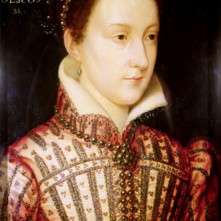
Mary, Queen of Scots
1497 – The Battle of Blackheath (also known as the Battle of Deptford Bridge) which ended the Cornish Rebellion. Henry VII's forces were triumphant against the Cornish rebels.
1551 – Death of Sir George Blage, courtier, poet and friend of Sir Thomas Wyatt the Elder, at Stanmore, Middlesex. His offices included Chief Steward and Bailiff of Maidstone, and Comptroller of the Petty Custom of London. He was a reformer and was arrested in July 1546 after he was heard denouncing the mass. Blage was condemned to death but, fortunately, was pardoned by Henry VIII.
1567 – Mary, Queen of Scots was imprisoned at Loch Leven Castle after her surrender to the Protestant nobles at the Battle of Carberry Hill a couple of days earlier. It was there that she is said to have miscarried twins fathered by the Earl of Bothwell. Mary managed to escape in May 1568.
1601 – Death of Gabriel Goodman, Dean of Westminster and founder of Ruthin School, Ruthin, Denbighshire. He was buried in St Benedict's Chapel, Westminster Abbey.
18 June
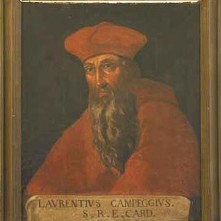
Cardinal Campeggio who presided over the Legatine Court
1529 – Opening of the Legatine Court at Blackfriars to hear the case for the proposed annulment of Henry VIII's marriage to Catherine of Aragon.
1546 – Anne Askew was arraigned at London's Guildhall for heresy, along with Nicholas Shaxton, Nicholas White and John Hadlam (Adlams or Adams). She was sentenced to be burned at the stake.
1558 – Proving of the will of Robert Recorde, Welsh mathematician and physician. His date of death is not known, but is thought to have been mid June 1558. He is known for introducing the “equal to” sign, i.e. “=”. He published several mathematical works, including “The Grounde of Artes, teachings the Worke and Practise, of Arithmeticke, both in whole numbers and fractions” in 1543, which was the first book on Algebra published in England, and “The Whetstone of Witte, whiche is the seconde parte of Arithmeteke: containing the extraction of rootes; the cossike practise, with the rule of equation; and the workes of Surde Nombers”, in which he introduced the “=” sign.
1588 – Death of Robert Crowley, Protestant printer, author, poet and Church of England clergyman. He was buried in the chancel of St Giles Cripplegate under the same stone as his great friend martyrologist, John Foxe.
1592 – Death of Francis Wyndham, Judge, at the Committee House, St Peter Mancroft, Norwich. His trials included the treason trials of John Somerville and William Parry in the 1580s, and his legal knowledge led to him being approached for advice on Mary, Queen of Scots.
1616 – Death of Thomas Bilson, Bishop of Winchester, at Westminster. He was buried at Westminster Abbey.
19 June
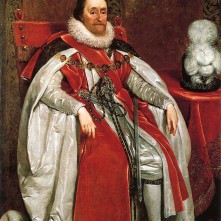
James I of England (VI of Scotland)
1502 – The Treaty of Antwerp was signed between Henry VII and Emperor Maximilian I at Antwerp. Henry VII promised a payment of £10,000 for aid against the Turks in exchange for Maximilian's promise to banish Yorkist rebels from his territories.
1535 - Sebastian Newdigate, William Exmew and Humphrey Middlemore, monks of the Carthusian Order of London Charterhouse, were hanged, drawn and quartered at Tyburn. Their crime: refusing to accept King Henry VIII as the Supreme Head of the Church.
1566 – Birth of James VI and I, King of Scotland, England and Ireland, at Edinburgh Castle in Scotland. James was the only son of Mary, Queen of Scots, and Henry Stuart (Stewart), Lord Darnley. James became James VI of Scotland when his mother was forced to abdicate 24th July 1567, and he became James I of England on the death of Elizabeth I, 24th March 1603.
1573 – Execution of Thomas Woodhouse, Jesuit priest and martyr, at Tyburn. He was the first priest to be executed in Elizabeth I's reign. Woodhouse was beatified in December 1886 by Pope Leo XIII.
1616 – Death of Henry Robinson, Bishop of Carlisle, at his home, Rose Castle in Carlisle. He died of the plague. Robinson was buried in Carlisle Cathedral.


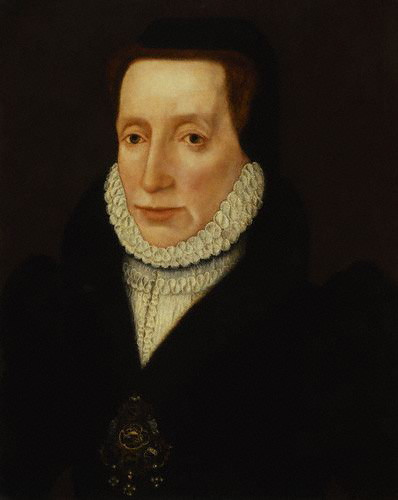
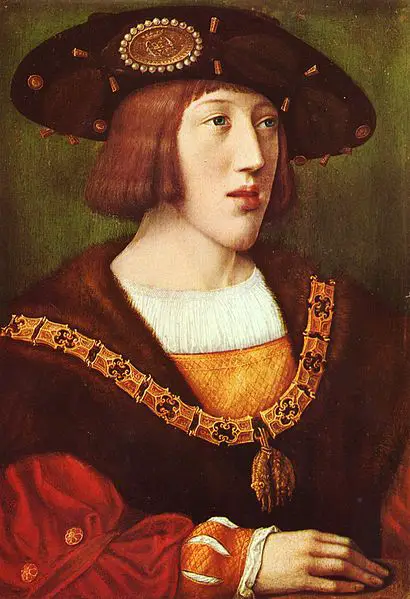
James 1st (6th of Scotland) was given 2 nicknames in his lifetime. 1. The Scottish Solomon, this was a veiled reference towards Rizzio, who some believed was James’s true father. 2. The wisest fool in Christendom, but was he really the fool that people believed? After all the Stuart (or rather Stewart, as it was Mary that changed the spelling) rulers, up until James 1st (6th) died in quite dramatic ways.
James 1st was murdered by Robert Stewart his chamberlain and around 30 followers. James tried to escape via the sewers only to discover the way had been blocked off when they caught up to him they stabbed him to death.
James 2nd:
Was an advocate of the use of modern artillery, and had great success in using it again the Black Douglas’s, and regaining Roxburgh Castle from the English in 1460.The Duke of Burgundy had gave him the gift of a cannon in 1454, which is still used today in ceremonial roles in Scotland, although it is purely theatrical. Filled with fireworks which are fired at the annual Hogmanay celebrations,the gun itself is not fired. This gun is called Mons Meg.
James 2nd however during an inspection of his recently accquired castle at Roxburgh was stood next to a cannon called the “Lion” when it exploded killing him instantly. He also had a nickname of “Firey Face” This is possibly a reference to a large red birth mark on his face.
James 3rd:
James was not exactly popular with his people as they felt that his obsession with making an English alliance was a betrayal of Scotland. Matters came to a head in 1488 between his nobles and fierce fighting broke out at Sauchie burn, As soon as James relised that he had lost the battle he escaped the battlefield and took shelter in a nearby cottage, hoping that he could hide there until it was safe for him to return to Edinburgh and plot his revenge. However some of his enemies managed to track him down and he was stabbed to death.
James 4th:
Only 15 when he was crowned king, he was tormented by the death of his father for the rest of his life and in fact wore a heavy iron chain around his waist called a Cilice as a penance at which every year at lent he would add extra ounces. He had wanted to marry Margaret Drummond, but she died on the morning of their wedding with 2 of her sisters, possibly poisoned by those who wanted him to marry Margaret Tudor to try a preserve the peace that they now had with England. It worked and for a while things may have been a little shaky but by and large aside from the odd name calling and sticking out their tongues at one another, England and Scotland lived side by side peacefully enough. I believe that James may have been a bit of a chancer and saw Henry 8th pub crawl to France as an oppotunity to conquer conquer England, aside from defending France due to the auld alliance, that had existed between France and Scotland since 1295. James probably though with Henry boozing it up in France that a woman ruler (Catherine was in affect ruling England at this point) wouldn’t give much resistance and that he could take the English throne with very little effort. Margaret had tried to warn him his actions would bring him and Scotland nothing but grief, but he refused to listen, and as a result lost his life along with 2 of his bastard sons on the battle field at Flodden.
James V:
Just 17 months when he succeeded, his life was very turbulant. His mother acted as regent for the first 2 years of his life, but upon her marriage to Archibald Douglas she was stripped of her power of Regent. James’s care was placed in the hands of his stepfather Archibald, who kept James a virtual prisoner for the next 3 years. Several attempts were made by his mother to rescue him (and his younger brother Alexander who was born shortly after the death of James 4th. Poor Alexander died in 1515) during this period Archibald all but ruled. James was around 13 or 14 when it was declared he was of age to rule without the need of a regent. In 1537 anxious to preserve the Auld Alliance, with France (and perhaps annoy Henry 8th) he choose as his bride Madeleline of France, and sailed to France to bring her home to Scotland. Francis had given James a mighty ship called the Salamander as a wedding gift, and it was this ship that was the pride of James’s fleet. Madeleline was not strong, and died just 7 months later. James then married Marie de Guise, who Henry 8th had hoped to marry himself, but Marie quickly decided to marry James instead. Her 2 sons by James both died on the 21st April 1541,Robert was just 8 days old and James was a year old.
The death of his mother in 1541 shook the foundations of the peace that had existed between England and Scotland and completely finally broke down in 1542 and they went to war once again. James was defeated on the battlefield at Solway Moss and fled to Falkland palace where it is said he died of grief, leaving a six day old girl as Queen. it’s often been said that when James was told of Mary’s birth he said “Scotland came by lass it will go by one too” If he did indeed say it turned out to be true as the last of the Stuart monarchs was Anne (daughter of James 2nd of England).
Mary Queen of Scots:
As I’ve said she became Queen at just 6 days old, the first 5 years of her life were know as the rough wooing. Henry 8 perhaps thinking once again of restoring the peace between Scotland and England, asked Marie de Guise to agree to a marriage between Mary and his son Edward. Marie de Guise did initially agree, but perhaps under pressure from her Catholic nobles basically told Henry to go spin. Naturally Henry decided to try and force the issue and got the Duke of Somerset to go up mob handed and capture the queen and bring her to England. Meanwhile Marie de Guise hid Mary away in Dunkeld for a couple of years. The death of Henry 8th brought a temporary reprieve but the Duke wanting to fulfil his dead master’s wishes continued to conquer Scotland and take the Queen back to England. Marie de Guise once again Hid Mary away this time in Inchmaholme priory in the middle of lake Menteith. Shortly after the battle of Pinkie Cluegh however Marie De Guise relised that if she intended to keep Scotland as a country of it’s own she would need help. Pinkie Cluegh had destroyed most if not all of her army, so she turned to the only person who could give her the help she needed. She wrote to Henry of France and offered him her daughter in return for a French army. She was even prepared to send her daughter to France now instead of waiting until Mary was of age. Henry accepted and Mary set sail for France from Dumbarton. Her life in France was very pampered, and very different from what she had had in the first 5 years of life in Scotland. After the death of her husband Francois she returned to a very troubled and disjointed Scotland in 1560. She married twice more to men who really were the worst type of rogues imaginable. Lord Darnley was a dissolute drunk and jealous of Mary friendships with other men. When she was around six months pregnant, Darnley with others burst his way into her apartments one night and found her having supper with Rizzio, who many believed was her lover. Poor hapless Rizzio was stabbed 56 times in front of her which Darnley forced her to watch. Mary gave birth to her only child James, in June. The following February Darnley was murdered, possibly by Bothwell who was believed to be Mary’s lover at this point. Her insane ride to reach Bothwell after she heard of his injury from Edinburgh to Hermitage castle a distance of about 66 miles on the Anglo/Scottish border. She is alledgely supposed to have ridden this distance there and back within a day and just a matter of a few weeks after the birth of her son. It’s possible I suppose with post horses, if so Mary did fall seriously ill afterwards, and I’m given to believe it was only by the skill of her French doctor Dr Bourgoing that she pulled through. Mary was to fall ill several times during her life and it’s my belief that she was possibly suffering from Portythia, as some of her symptoms seem to be an indication to the accepted norm of Portythia. I.E high fever, crippling pains of the joints and stomach, errational behaviour and mood swings, followed by great storms of weeping, as well as evidence of plum coloured urine. These symptoms were also evident in James her son, later on in his life.
The plan to murder Darnley was that he was to be blown up in his house at Kirk o field, however Darnley body was found in the orchard of the house, naked and bearing the signs of strangulation, along side that of his servant. Darnley wasn’t even given the dignity of a decent burial, and was possibly just dumped in a common grave. Certainly there doesn’t seem to be any memorial for him as far as my research has discovered or not as the case may be. Was Mary involved in Darnley death? It’s still very open to speculation in my opinion. But I believe she agreed with the plan to get rid of him, as she hated him with a passion after the murder of Rizzio, but wasn’t aware of how he was to meet his death. Her actions after learning of his death in my opinion are fairly bizarre, instead of showing any form of indignance or outrage at his murder she went out and played Golf. She flatly refused to to order an inquiry into Darnley’s murder and kept the prime suspect, Bothwell in her company, she even went perhaps willingly to Dunbar with him, where it is alledged he raped her, I believe she wasn’t exactly an unwilling victim, but either way she married Bothwell, which destroyed any trust or respect the people of Scotland may have once had for her. She was called a mermaid (A euphemisum for a prostitute) and was finished as Queen. Bothwell abandoned her and fled to Denmark, where he was imprisoned in Dragholm castle and died insane in 1578. James Stewart her half brother had her imprisoned in Lochleven and forced her to abdicate, in favour of her son. She managed to escape and fled to England, where she was imprisoned in one draughty castle after another for 19 years. She finally lost her head over the Babbington plot although she had been involved in two others before the Babbington plot and each time Elizabeth had forgiven her. Mary died at the hands of an axeman in Fortheringay Castle on the 8th February 1588. It took 3 strokes to sever her head, and when the executioner bent down to show the head to the small gathering of people there, her wig came away and her head bounced down the scaffold, the wig had hidden that Mary’s hair was short grey stubble. Her little dog a skye terrier thant she had called Geddon, came out from under his mistress’s skirts and refused to allow anyone to touch Mary’s head. Covered in blood the dog was eventually dragged away by the guard. Mary’s clothes and every belonging she had were burnt. Poor Geddon refused to eat and pined away and died just a few days later.
So was James a fool? In somethings perhaps, but he did die in his bed, he survived several assination attempts on his life before he came to England, and of course he survived Guy Fawkes. He did have a number of regents and nearly all of them died as a result of assassination. James Stewart (his half uncle) became the first man in Scotland to be assassinated by firearm in 1570.
James was very superstitous and believed firmly in witches and witchcraft. He believed that it was a witches wind that was sent to sink his shp on his journey back to Scotland from Denmark when he went to fetch his bride Anne. The Scottish play by Shakespeare is alledegly based on a prophesy that James, that was foretold at the time of his birth . “Titbit Alert” More plays by Shakespeare were performed during James’s reign then in Elizabeth’s.